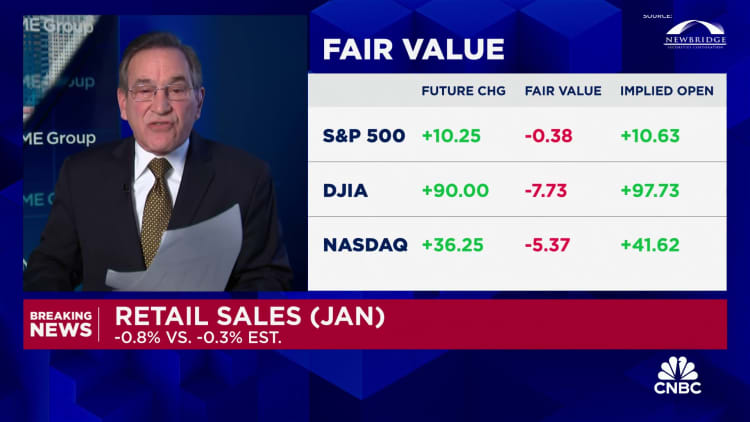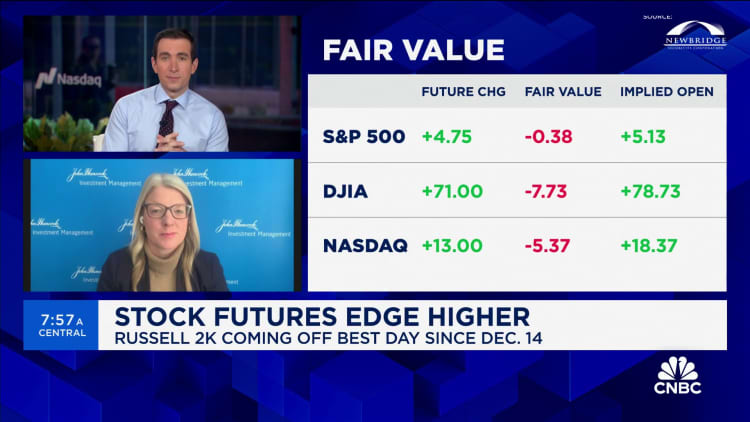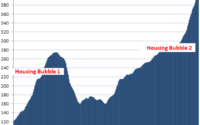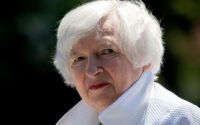Retail sales January 2024:

Consumer spending fell sharply in January, presenting a potential early danger sign for the economy, the Commerce Department reported Thursday.
Advance retail sales declined 0.8% for the month following a downwardly revised 0.4% gain in December, according to the Census Bureau. A decrease had been expected: Economists surveyed by Dow Jones were looking for a drop of 0.3%, in part to make up for seasonal distortions that probably boosted December’s number.
However, the pullback was considerably more than anticipated. Even excluding autos, sales dropped 0.6%, well below the estimate for a 0.2% gain.
The sales report is adjusted for seasonal factors but not for inflation, so the release showed spending lagging the pace of price increases. On a year-over-year basis, sales were up just 0.6%.
Headline inflation rose 0.3% in January and 0.4% when excluding food and energy prices, the Labor Department reported Tuesday. On a year-over-year basis, the two readings were 3.1% and 3.9%, respectively.
Sales at building materials and garden stores were especially weak, sliding 4.1%. Miscellaneous store sales fell 3% and motor vehicle parts and retailers saw a 1.7% decrease. Gas station sales also declined 1.7% as prices at the pump dropped during the month. On the upside, restaurants and bars reported an increase of 0.7%.
The control group of retail sales, which excludes items such as food service, autos, gas and building materials, fell 0.4%. The number feeds directly into the Commerce Department’s calculations for gross domestic product.

Consumer strength has been at the center of a U.S. growth picture that has proven far more durable than most policymakers and economists had expected. Spending accelerated by 2.8% in the fourth quarter of 2023, finishing out a year in which gross domestic product rose 2.5% despite widespread predictions for a recession.
However, worries linger that stubbornly high inflation could take its toll and jeopardize prospects going forward.
“It’s a weak report, but not a fundamental shift in consumer spending,” said Robert Frick, corporate economist for Navy Federal Credit Union. “December was high due to holiday shopping, and January saw drops in those spending categories, plus frigid weather plus an unfavorable seasonal adjustment. Consumer spending likely won’t be great this year, but with real wage gains and increasing employment it should be plenty to help keep the economy expanding.”
A separate economic report Thursday showed continuing labor market strength, another critical bedrock for the economic picture.
Initial claims for unemployment insurance totaled 212,000 for the week ended Feb. 10, a decline of 8,000 from the previous week’s upwardly revised total and below the estimate for 220,000, the Labor Department reported.
Continuing claims, which run a week behind, totaled just shy of 1.9 million, up 30,000 on the week and higher than the 1.88 million estimate.
There also was some good news on the manufacturing front, as regional surveys in the Federal Reserve’s Philadelphia and New York districts both came in better than expected for February.
The Philadelphia survey showed a reading of 5.2, up 16 points and better than the -8 estimate, while the Empire State survey for New York was at -2.4. Although the New York survey still indicated contraction, it was a much better reading than January’s -43.7 and the -15 estimate. The surveys measure the share of companies reporting growth, so a positive reading indicates expansion.
Markets largely took the reports in stride, with stock futures pointing to a higher open on Wall Street.
Investors are closely watching the numbers for clues about which way the Fed will go in terms of monetary policy and interest rates.
Federal Reserve officials have said they are satisfied enough with the prospects for both inflation falling and growth holding steady that the rate-hiking cycle begun in March 2022 is likely over. But they are watching the data closely, with most saying that they will need more evidence that inflation is on a sustainable path back to the central bank’s 2% goal before starting to cut.
Futures market pricing is indicating the first rate reduction will happen in June, with the Fed moving a total of four times, or a full percentage point, by the end of 2024.
Don’t miss these stories from CNBC PRO:
[ad_2]
Source link


